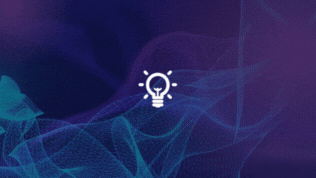Artificial Intelligence at events: how can it improve the attendee experience?
What if your event could instantly adapt to the audience's emotions?
Artificial Intelligence has ceased to be a futuristic promise to become a real ally in the design and execution of experiences. In the world of events, we don't just talk about lights, sound or decoration anymore. We talk about how invisible technology can transform the experience of each attendee into something unique, relevant and memorable.
But how exactly is AI being applied in this industry? What tools are available? Is it only for big budgets or are there affordable options as well? Let's go in parts.
1. Personalized virtual assistants: beyond the generic chatbot
One of the most visible forms of AI in events are virtual assistants. These are no longer poorly worded automatic responses. We are talking about conversational systems that learn from the user, respond in natural language and offer personalized recommendations.
Real example: The Sónar Barcelona 2024 festival incorporated an AI-based assistant capable of recommending concerts, answering logistical questions and adapting suggestions according to the user's previous behavior in the event's app.
Accessible tool: Platforms such as Dialogflow (Google) or ManyChat allow you to create trained attendees without the need to program. Integrated into apps or WhatsApp, they can be as sophisticated as the strategy allows.
2. Real-time behavioral analysis: the event that adapts
Cameras, sensors and mobile phones generate thousands of data per second. AI can process them to understand how people move, in which areas there is the most interest or how long they stop in front of a stand. That information isn't just stored: can generate actions in real time.
Real example: At CES in Las Vegas, brands such as LG or Samsung used computer vision systems to adapt the content on screens according to the (estimated) demographics of the people they were approaching: more visual for young people, more technical for professional profiles.
Accessible tool: Solutions such as Crowd Connected or Zenus they allow us to analyze attendee flows through WiFi or smart cameras, and can be adapted both to fairs and to smaller scale corporate events.
3. Logistics automation: when unforeseen events resolve themselves
Assembly, access, check-in, accreditations, catering... the logistics of an event is a complex machine. AI makes it possible to predict bottlenecks, optimize resources and act autonomously in the face of incidents.
Plausible case: A corporate event with more than 800 attendees uses an AI system to control check-in and redeploy staff to access points if it detects queues forming. It also predicts peaks in demand in the catering area to avoid stock breakages.
Accessible tool: With tools such as Akkroo, Zkipster or RainFocus, can be automated from guest management to internal staff flows.
4. AI-Augmented Content: When the Experience Becomes Interactive
Real-time image or sound generators allow you to create personalized immersive experiences. From AI-generated filters for social networks to installations that respond to the movement or voice of the public.
Real example: At a Mercedes-Benz product presentation, attendees could “create their own car” through an interactive screen powered by generative AI, which created unique renders in seconds based on the indicated preferences.
Accessible tools: Platforms such as Runway, Kaiber or WavTool allow you to create visual or musical content adapted to the audience in real time, even without technical knowledge.
5. Surveys and intelligent feedback: know what they think before they say it
AI can detect emotions based on voice, language or facial expression. This allows us to obtain insights beyond traditional surveys. How did the attendees feel during a presentation? What moment attracted the most attention?
Plausible case: A company organizes a team building event and, thanks to sensors and facial analysis, discovers which dynamics were most enjoyed without having to ask directly. That feedback guides upcoming events.
Accessible tools: Tools such as Affective or Tobii Pro allow you to capture and analyze emotions in real time through video, ideal for events where emotional experience is key.
It's not science fiction. It's strategy.
The key isn't to use AI for the sake of it, but to identify what parts of the experience can actually be improved. Not everything requires sensors or virtual assistants. Sometimes, a good recommendation system can make a difference. Or invisible automation that avoids queues or errors.
The technology is ready. The tools are within reach. What remains is for brands, organizers and creative teams to begin to incorporate AI not as an ornament, but as a lever to design more human, more fluid, more memorable events.
Perhaps the best experience, in the end, is the one where you don't even notice that it was designed with AI. Because it just... it works.





